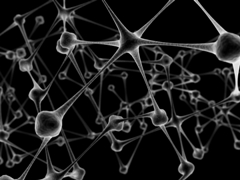In the previous article (click here to view) I spoke about our two processing systems – conscious and unconscious processing and how hypnotherapy can help to bring balance and harmony between these two important systems. Let’s continue the discussion:
A bit more about how our brains have evolved
Within each of our brains there are patterns, networks of electrical currents called neural pathways. Our neural pathways are programmed to stimulate specific thoughts, feelings, actions and reactions.
Current research in neuroscience provides evidence that our brains are able to develop new neural pathways throughout our lifetime. This means that each of us is able to change and learn during the course of our entire life.
A quick thought about repetition: The more we do the same thing – repetition – whether that’s a repetition of a behaviour, thought and/or emotion, the more likely this pattern becomes automatic, a neural pathway. This means the pattern has become part of our unconscious processing system (as discussed in the previous article).
This is great if the pattern is something that enhances our life. The news is still good if we have developed pathways which are likely to bring pain or distress, whether that’s experience physically and/or emotionally eg anxiety, as new supportive neural pathways can be developed.
Other considerations – 2 important systems within our autonomic nervous system
The sympathetic nervous system and parasympathetic nervous system are part of our autonomic nervous system and function at the unconscious level. They control the activities of organs, glands and various involuntary muscles such as the heart and those used in digestion.
The sympathetic nervous system responds automatically to fight off or retreat from danger. It is often referred to as the fright, flight, freeze (and more recently faint) response. It is a stress response.
For many people experiencing anxiety it is this fright/flight response which is triggered and to an extreme.
The parasympathetic nervous system is the relaxation response, a natural response when a person is feeling safe. It is often referred to as the rest and digest response.
Both responses are important at the appropriate times.
People who experience anxiety have often repeated the stress response to a point where it has become the automatic response.
Dr Dan Siegel has developed a wonderful hand model of the brain. He uses this hand model to demonstrate what happens in the brain when someone is experiencing the fright/ flight/ freeze response and how repetition creates patterns of behavior and emotions. This model also illustrates how each of us can activate our brain to calm and regulate our emotions and uncomfortable bodily sensations.
I find the following YouTube clip very useful in explaining these processes. https://www.youtube.com/watch?v=vESKrzvgA40
A few thoughts about why I believe hypnotherapy can assist bringing all this together
We all experience different brainwave frequencies throughout the day. Five different frequencies have been identified – Beta, Alpha, Theta, Delta and Gamma. Each frequency has its own set of characteristics representing a specific level of brain activity and a unique state of consciousness.
When someone is experiencing the trance state the brain hovers between two states of Alpha and Theta. These are the states that support an inward focus, relaxation and enhanced learning, change and healing. It is in these states that the unconscious mind becomes much more accessible. A delightful characteristic of the unconscious mind is that it has no reasoning ability and is not bound by the old limiting thoughts and beliefs held by the conscious mind. In trance the conscious mind becomes less attentive leaving the unconscious mind free to explore new possibilities.
As a clinical hypnotherapist I induce the trance state and offer suggestions that will provide the unconscious mind with the opportunity to rehearse new, more appropriate and supportive behaviours and reactions – remember the power of repetition in building new neural pathways. I also give everyone I work with a CD of a hypnosis session which reinforces the work done in therapy and offers people the opportunity to rehearse and repeat the relaxation response – supporting the development of new neural pathways.
Katina Gleeson
P 07 3168 1779
M 0415 480 804
E katina@focushypnotherapy.com.au
W www.focushypnotherapy.com.au

